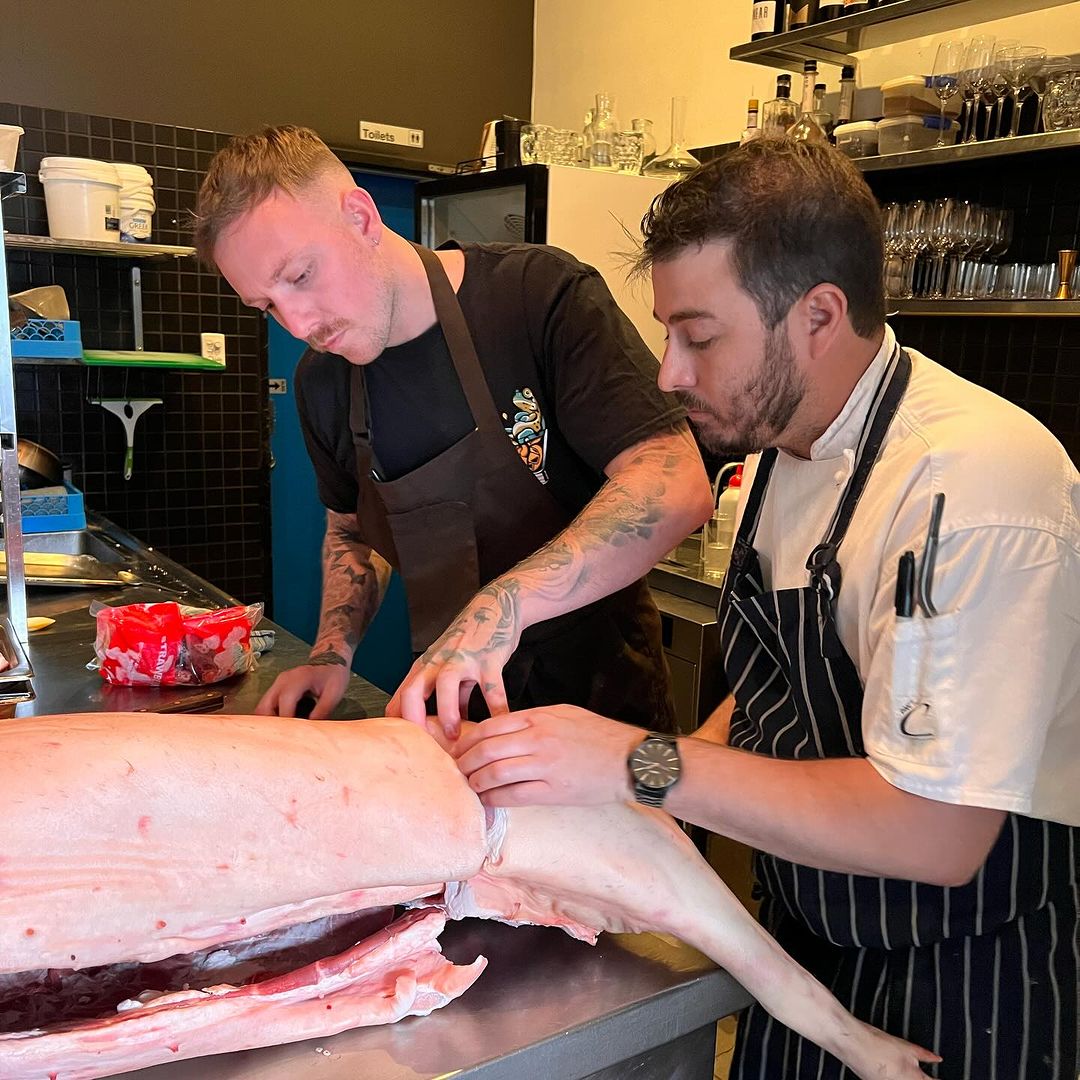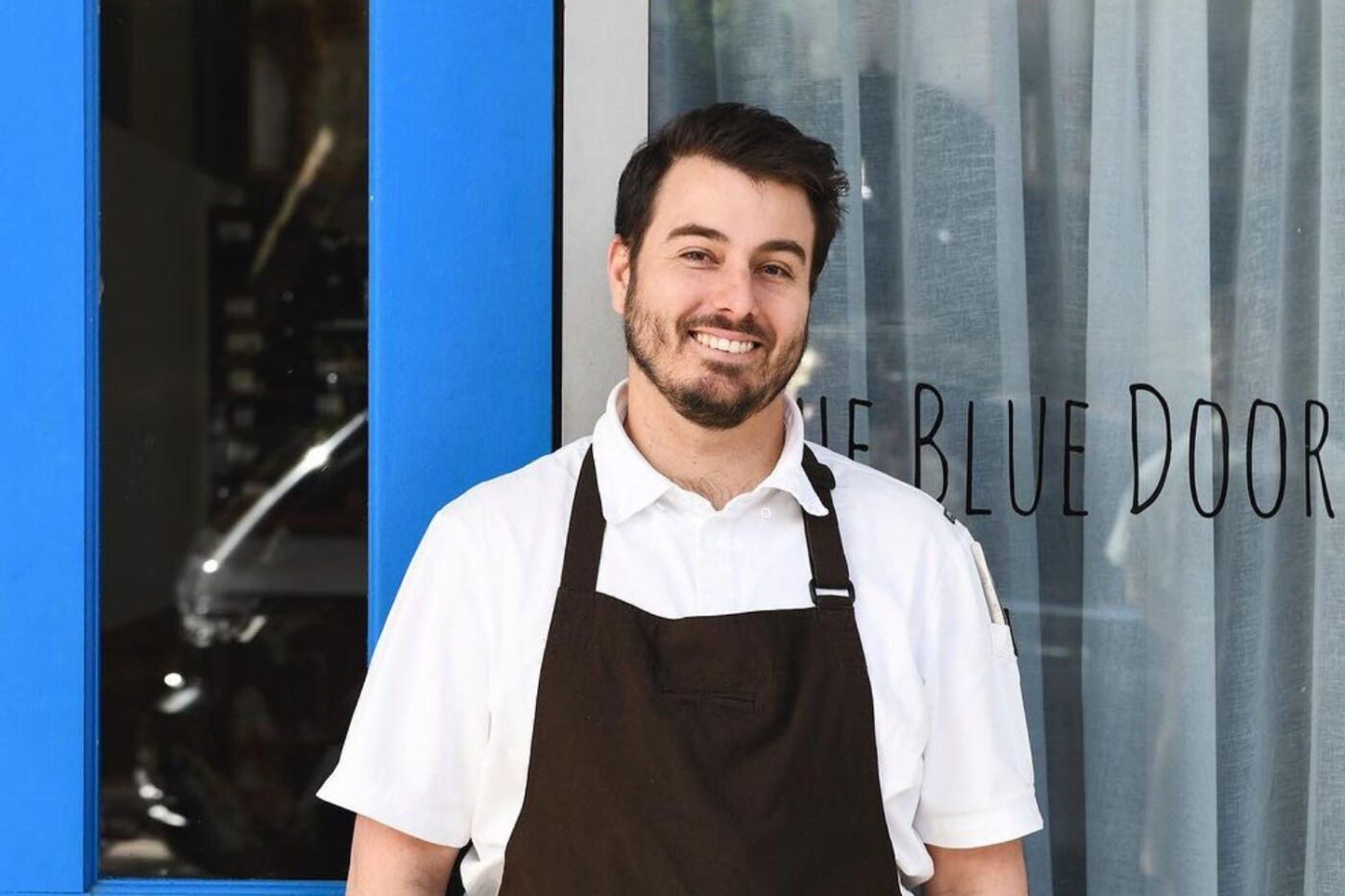Take it from us, cooking the perfect Christmas Day feast doesn’t have to be a stressful, rushed disaster that spoils the Christmas spirit quicker than a bad Monopoly loser. In this Australian Chef’s Guide To The Perfect Christmas Dinner, Chef Dylan Cashman offers DMARGE readers his best tips for stealing the show on Christmas day.
With Christmas just a few days away, all of us will undoubtedly be finalising our last-minute preparations ahead of the big day: ordering the last of the Christmas gifts, decorating our homes and getting everything prepared for a delectable Christmas feast for our friends and family.
For many, the prospect of cooking an entire roast dinner for Christmas lunch can seem like a daunting task. From your nan’s traditional Christmas dinner recipe; the way your brother likes the roast potatoes; and that cousin who you see once a year who just finished the second season of The Bear, there’s plenty to consider – and get wrong – on the big day.
So this year, we wanted to keep it simple and asked one of Sydney’s most innovative chefs to answer our burning questions so we’re all better prepared for the best Christmas dinner possible. From selecting the best cut of meat to cooking the perfect crunchy crackling, our Perfect Christmas Dinner Guide is the only one you’ll for your Christmas lunch ideas that’s bound to have your guests saying: “Yes, Chef!” at the table.
In this Australian Chef’s Guide To The Perfect Christmas Dinner article
The Blue Door, Surry Hills
Known for his signature head-to-tail approach to cooking, Chef Dylan Cashman has championed ethical and sustainable practices in his Surry Hills restaurant, The Blue Door, since opening the location with his partner, Angelica in 2021.
Together, the pair have curated a truly unique experience in the heart of one of Sydney’s most vibrant neighbourhoods. Dylan and Angelica are committed to hand-selecting the finest suppliers in Australia – and New South Wales, specifically – to develop an ever-changing menu and bespoke wine selection that elevates the overall experience taking diners on a guided journey through the country’s best offerings.
Selecting The Best Christmas Pork
Growing up in the Mid North Coast, Chef Dylan said his Christmas meals were inherently Australian feasts, complete with cooked Christmas ham, oysters and prawns for lunch, followed by the great Australian pavlova, Christmas pudding and trifle.
Now, as Head Chef of The Blue Door, Dylan prides himself on finding the best suppliers in New South Wales for its changing seasonal menus. Rather than telling the farmers what he needs, and therefore putting pressure on farmers and suppliers to prioritise one cut over the rest, Chef Dylan asks them what they’ve got.
The result is a hand-selected seven-course tasting menu that makes fine dining fun and accessible for all of The Blue Door’s guests. So it’s no surprise that when we asked Dylan where is the best place to find your Christmas pork, he said: “Go to an actual butcher.”

But what are some questions you can ask your butcher to ensure the quality of meat you’re purchasing is the best it can be?
“Firstly, is it pasture-raised? Not Pasture Finished…Pasture Raised,” Dylan explained. “Can your butcher tell you who raised it? If they can give you an exact person and location, that’s a very good start!”
“Go to an actual butcher.”
It’s certainly a key element to Dylan’s cooking that embodies his ideologies. He not only champions good quality, local suppliers but gives the same respect to the animals that he’s preparing, speaking with the farmers to ensure that all his dishes, whether it be a main from his coveted Blue Door menu or a beautifully prepared Christmas dinner, is the best it can be.
But what’s the best cut of meat for Christmas?
“Definitely the belly. For the least amount of fuss – the most important thing at Christmas – you can cook all the fat out and get a perfect crackle without drying out the meat.”
How To Make Pork Crackling
There’s not much better than the best pork crackling on a roast. It’s crunchy and fatty at the same time, and the perfect side to any Christmas lunch. But what’s the secret to making the perfect pork crackling?
“Use a fatty cut like pork belly as it allows you to naturally create crackling rather than force it. This means you aren’t sacrificing the meat for the crackle,” he said. “For example, with pork belly, score it and pour boiling water over the top to open the skin and soften it and to let fat escape and crackle nicely.”
“Personally, I like to cook it around 200 degrees, with lots of salt on the skin (and I mean A LOT…if you think it’s enough, add more). Around 1.5 – 2 hours. Then, reapply the salt…yep, lots of salt, then turn the oven right up to 230C degrees to finish it until it crackles. The beauty of pork belly is you want it to cook out and become a fall-apart style of meat. It’s held together by the crackling.”
How To Make Gravy
No, not the Paul Kelly classic – although Chef Dylan reckons it’s a good place to start for beginners.
Making the perfect Christmas Day gravy is never a secondary afterthought when you’re resting the meat, quickly scrambling to whisk up a Bisto cube in some boiling water to sludge over your beautiful feast. For Dylan, the key to the best gravy could be the first thing you do on Christmas day.
“With anything I’m roasting, I roast on top of a “Mirepoix” of vegetables like carrots, onion and garlic cloves (celery if you have it) and some water (ie. the water from the boiling water poured on your pork skin,” he tells us. “The liquid takes on the flavour from the roasting pork and the fat rendered out of the pork.”
“The secret here is to add more water to it while it’s roasting to ensure the tray doesn’t go dry and you never burn the tray when you have cranked the oven up to get your crackling. Once the pork is cooked, strain off your mirepoix (and I happen to make a salad out of the roasted vegetables because it’s porky and delish) and then follow Paul Kelly’s recipe about How to Make Gravy from here.”
Five ways to avoid drying out the Christmas meat according to an Australian chef
- Buy Belly instead of Loin.
- It might sound obvious but cook it less and let it rest.
- If super keen on the loin, try it on a BBQ. Start really low on boiled skin over the low heat. Take your time. Don’t let the flames hit it… (also, the longer it takes, the more beers you can drink… can’t see a downside)
- Buy a thermometer
- When you are cooking poultry, brine it for as long as possible – 6+ hours is good. Cook it in sections. Cook the whole chicken until the breasts are 60-ish degrees and cut the legs off. Finish the legs and let the breasts rest.
